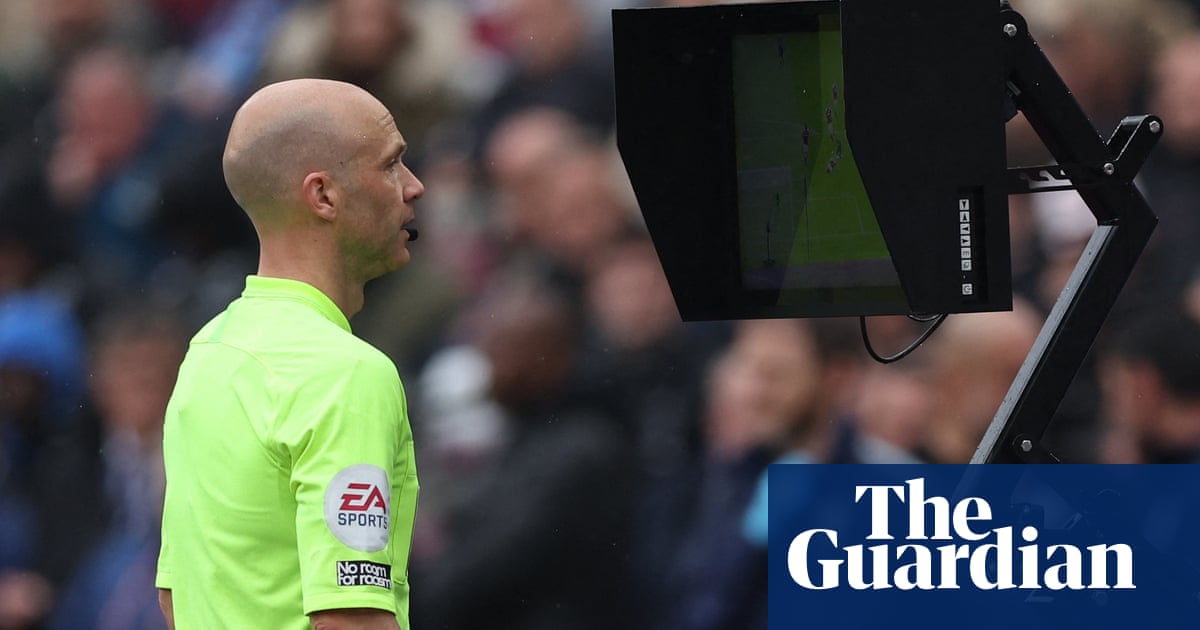AI-powered technology will be used to speed up VAR offside calls at World Cup - 3 minutes read

Referee Anthony Taylor during a VAR review. Fifa’s new SAOT system is aimed at reducing the time it takes for to make decisions. Photograph: Matthew Childs/Action Images/Reuters World Cup 2022 AI-powered technology will be used to speed up VAR offside calls at World Cup Sensor in ball will send out location data 500 times per second Fifa claim average decision time will fall from 70sec to 25sec
Semi-automated offside technology (SAOT) will see a complete overhaul of the system used to judge ‘positional’ offside decisions in the lead-up to a goal. While a referee and their assistant will still make on-field calls and the referee will have a final say on SAOT decisions, the controversial practice of rewinding TV footage will be a thing of the past.
“Semi-automated offside technology is faster and more accurate and offers better communication to fans,” said Pierluigi Collina, the chair of Fifa’s referees committee. “It can create a new form of visualisation for supporters at home and in the ground. All tests have worked well and so [SAOT] is going into Qatar World Cup 2022.”
During the World Cup offside reviews will be conducted by creating a 3D map of the goalscoring action, using a combination of 12 cameras and a hi-tech ball. The Adidas Al Rihla ball will be fitted with a sensor that sends out location data 500 times per second, which will be matched against player positions on camera, with synchronised devices tracking 29 points on players’ bodies and relaying information 50 times per second.
That data will be processed using AI technology devised in collaboration with a number of universities, including the Massachussetts Institute of Technology. After being sent to an SAOT operator it will be double-checked by a VAR. The VAR will then relay the verdict to the referee, who will make the final call but will, in theory, merely approve the decision. Collina said that in trials the time taken to make a decision, compared with the previous VAR system, had fallen to 25sec from an average of 70sec.
Collina said the primary aim of the new system was to achieve more accurate decision making. Speeding up decision times, he said, was more of “psychological” importance to fans. Criticism of VAR offside decisions has concentrated on accuracy and speed – with cameras currently adjudging the position of players and ball deemed too imprecise.
“The objective is to have very accurate technology, similar to goalline technology,” Collina said. “Goalline technology used to measure to distances of 3cm; now it is millimetres and the technology is praised. Everyone praises the technology and it should be the same for [SAOT].”
He added: “We [also] wanted to offer something that gave a quicker answer. In terms of accuracy it’s important, in terms of time it’s more psychological. If I look at other sporting experiences the time [taken by technology to come to decisions] is lived in a normal way by coaches and spectators. In NBA you see players drinking, spectators enjoying themselves, no one is caring about the time. We know football is different [however] and that time is important.”
Once a decision is made a 3D rendering of the offside incident will be shown on television and on screens in the World Cup stadiums. Collina said that the image would be easier to interpret for the viewer than previous TV pictures with lines drawn across them, but that the images would take an extra 25 seconds to generate.
Source: The Guardian
Powered by NewsAPI.org